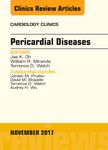版权所有:内蒙古大学图书馆 技术提供:维普资讯• 智图
内蒙古自治区呼和浩特市赛罕区大学西街235号 邮编: 010021

作者机构:Division of Cardiology Atherosclerosis Research Center Cedars-Sinai Medical Center Los Angeles CA 90048 United States
出 版 物:《Cardiology Clinics》 (Cardiol. Clin.)
年 卷 期:1999年第17卷第2期
页 面:271-281页
学科分类:1002[医学-临床医学] 100201[医学-内科学(含:心血管病、血液病、呼吸系病、消化系病、内分泌与代谢病、肾病、风湿病、传染病)] 10[医学]
摘 要:Considerable data from in vitro and in vivo studies of vascular biology, together with indirect evidence from clinical trials of lipid-lowering or modifying and lifestyle or risk factor modifying interventions, provide strong support for the concept that disruption of atherosclerotic plaque and subsequent thrombosis is a key precipitant of potentially lethal, acute coronary syndromes. Certain characteristics of plaques, including the size and composition of the lipid core, the structure and composition of the fibrous cap, and the presence of a local inflammatory process, predispose the plaque to disruption. Stresses resulting from biomechanical and hemodynamic forces acting on plaques may then trigger disruption, releasing the thrombogenic contents of the lipid core. Alterations in endothelial function may also contribute to vulnerability of plaque rupture and thrombosis. Therefore, interventions aimed at decreasing plaque vulnerability to disruption all based on the concept of plaque stabilization may reduce the risk of acute coronary syndromes. Although not yet rigorously validated in humans, plaque stabilization may prove to be an important clinical strategy for preventing the lethal consequences of coronary atherosclerosis.